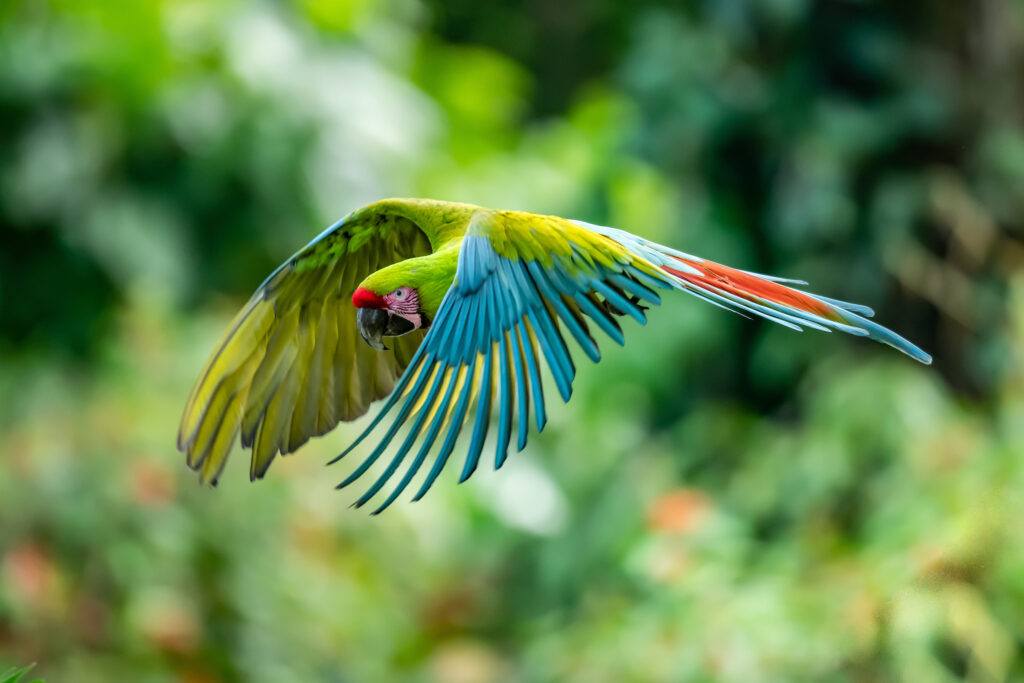The flock soared beneath the tropical sun, emerald and azure feathers flashing like brushstrokes. These vibrant birds, Critically Endangered great green macaws, are a treasured sight in Costa Rica, where Macaw Recovery Network (MRN) works to protect them. Deforestation and slow reproductive rates have caused these parrots to decline, but MRN has spent years diligently defending and restoring their forest habitat, monitoring wild macaw population health, and conducting scientific research to give them the best chance at survival.

This year, MRN led an international great green macaw census across Colombia, Costa Rica, Ecuador, Honduras, and Panama—five of the six countries where the species is found—with over 100 participants from 42 organizations taking part, the largest census of its kind. This sort of collaboration amongst conservationists is critical to protecting the macaws across their entire range. While results are still being analyzed, they confidently recorded at least 600 great green macaws across all five countries. In Costa Rica, where MRN operates, the population grew from 330 to 550 individuals—a 67% increase since 2021—the largest number ever recorded in the country. This demonstrates the effectiveness of MRN’s interventions in the heart of the macaws’ range. By continuing their work in Costa Rica and expanding their collaborations with groups abroad, MRN will help great green macaws continue painting the skies with their beauty.

